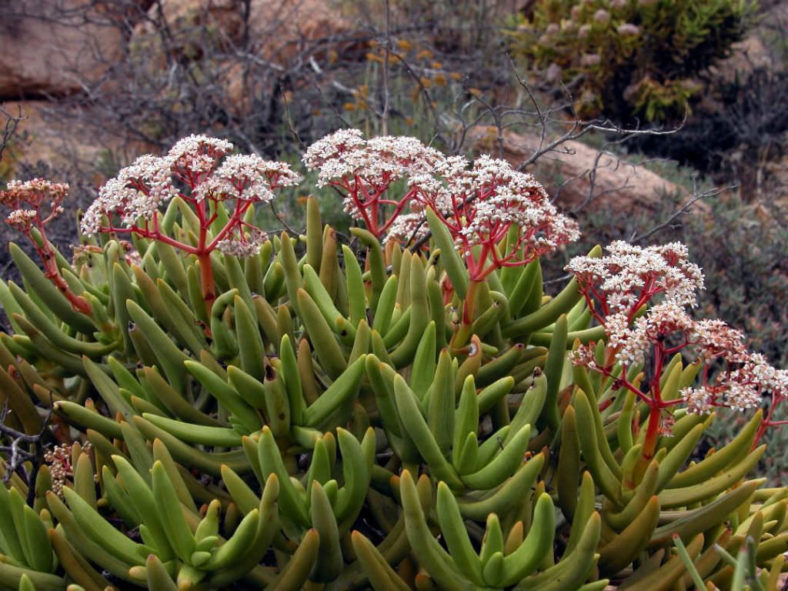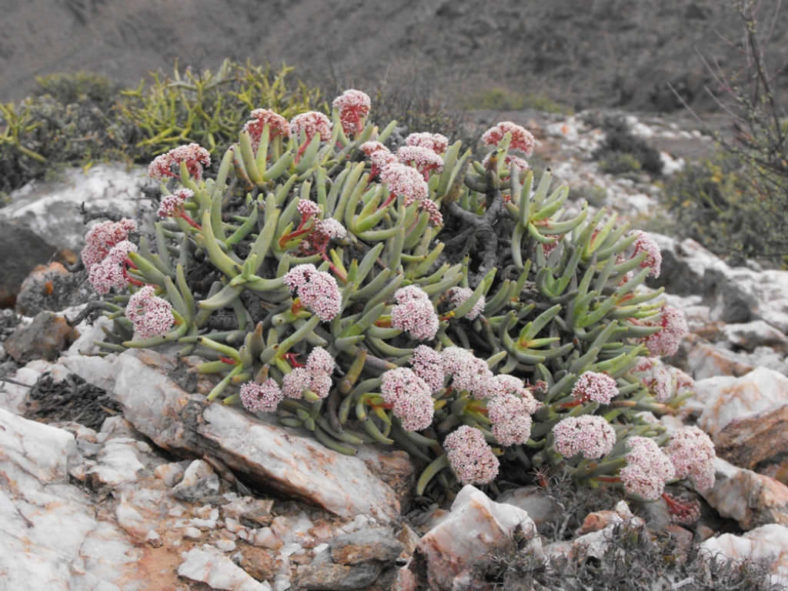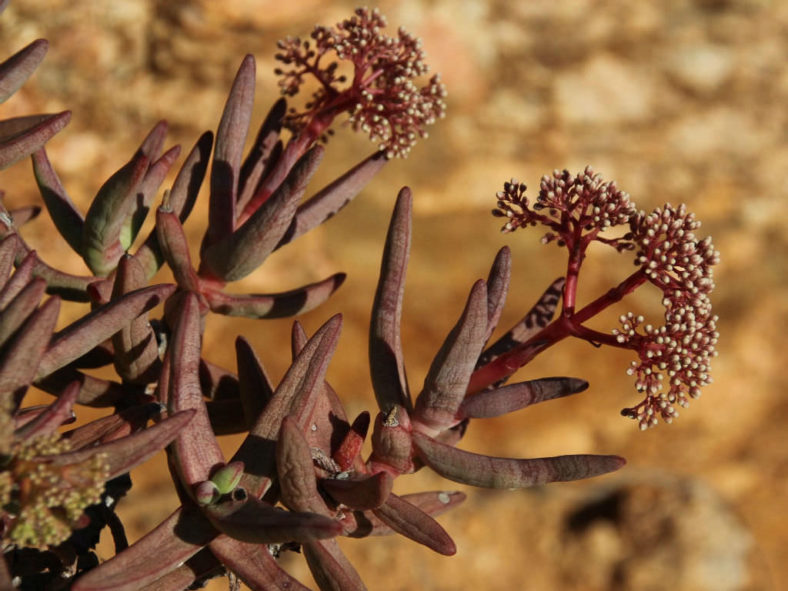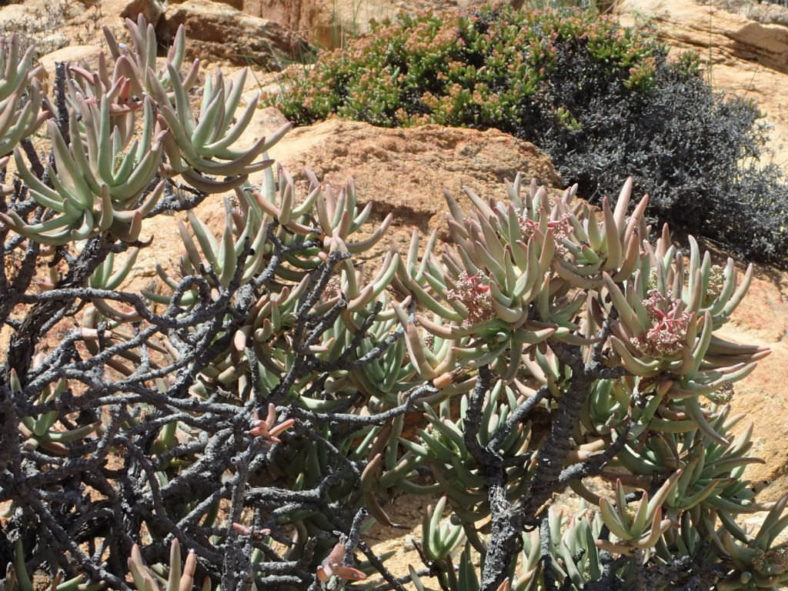Scientific Name
Crassula macowaniana Schönland & Baker f.
Synonym(s)
Crassula macowaniana var. crassifolia, Rochea perfoliata var. glaberrima
Family: Crassulaceae
Subfamily: Crassuloideae
Genus: Crassula
Etymology
The specific epithet "macowaniana (ma-kow-AN-ee-AH-na)" honors Peter MacOwan (1830-1909), a British-born South African botanist and teacher who was director of the Cape Town Botanical Garden and curator of the Cape Government Herbarium.
Origin
Crassula macowaniana is native to South Africa and Namibia.
Description
Crassula macowaniana is a succulent shrub with many branches and thick, fleshy, more or less pointed leaves. It is variable in the shape and size of the leaves but may also vary from a shrub up to 4 feet (1.2 m) tall to a low plant with prostrate stems. The older branches are woody with reddish-brown to grey peeling bark. The leaves are green to grey-green, sometimes tinged with red or reddish margins, and often covered with fine glandular spots. They can measure up to 2.4 inches (6 cm) long and 0.6 inches (1.5 cm) wide.
In summer, rounded terminal clusters of white flowers, often tinged with pink, appear on stalks that can grow up to 2 inches (5 cm) tall.

How to Grow and Care for Crassula macowaniana
Light: Crassula plants prefer full sun to partial shade. However, intense afternoon sun in the hottest period of summer can burn the leaves of the plants. Most Crassulas can be grown indoors if given enough light.
Soil: They are not particular about soil pH, but Crassulas require very porous soil with excellent drainage.
Hardiness: Crassula macowaniana can withstand temperatures as low as 30 to 50 °F (-1.1 to 10 °C), USDA hardiness zones 10a to 11b.
Watering: These plants have typical watering needs for succulents. Avoid overwatering using the "soak and dry" method, where the soil is soaked with water, slowly drained, and left to dry out before watering again. Reduce watering in winter.
Fertilizing: Crassulas will benefit from a small amount of organic fertilizer in mid-spring when they start actively growing.
Repotting: Repot as needed, preferably in spring, at the beginning of active growth.
Propagation: Crassulas are generally started by leaves or stem cuttings. They can also be grown from seeds and offsets.
Learn more at How to Grow and Care for Crassula.
Toxicity of Crassula macowaniana
Crassula plants are generally nontoxic to people and pets.
Links
- Back to genus Crassula
- Succupedia: Browse succulents by Scientific Name, Common Name, Genus, Family, USDA Hardiness Zone, Origin, or cacti by Genus
Photo Gallery
Click on a photo to see a larger version.


